My Opinion
Memories of the Circus Trains
Mar 15, 2006

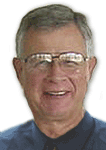
By Noel Widdifield
LSOL.com Managing Editor |
Author
Bio
When I was growing up in the 1940ís &1950ís, the circus would come to our town in central Indiana once a year. My grandmother lived about a block from the county fairgrounds where the circus set up.
|
When I was growing up in the 1940ís &1950ís, the circus would come to our town in central Indiana once a year. My grandmother lived about a block from the county fairgrounds where the circus set up. My brothers, sister and I would go to our grandmotherís to spend the night before the circus train arrived. 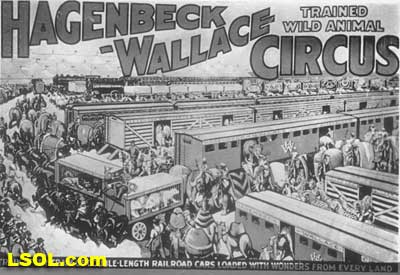
We would get up very early in the morning in order to see the circus parade that brought the circus from the train to the fairgrounds. We loved to watch the elephants pull the circus wagons and see the display of wagons and animals that paraded by grandmaís house. Those early experiences with the circus have left me with a lasting interest in circuses and circus trains.
Circuses began to use trains as transportation in the 1870ís and continued to use them into the mid-1950ís when the last two traditional circus trains - Ringling Bros. and Barnum & Bailey - came to an end in Pittsburgh in the middle of the year. Circus trains would come back later, but in much different forms. 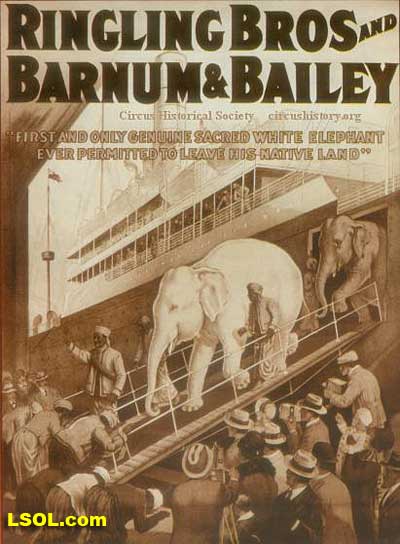
Circus trains were made up of special cars designed to move the circus equipment, animals and people over the long distances the circuses had to travel to reach their audiences. The special cars included advance cars, flatcars, stock or animal cars and coaches and sleepers. These cars were painted in bright colors and were lettered with the circusí name and advertisements about the circus. Locomotives from the railroads they traversed usually pulled the circus trains. Most railroads added one of their cabooses to the rear of the circus train. 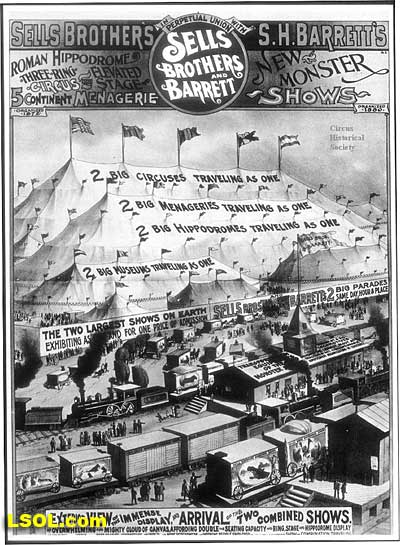
The advance cars were pulled on regular trains to the cities a few weeks before the circus was due to arrive. The cars were painted as rolling billboards and were usually converted combines, baggage or postal cars. Up to thirty advance agents rode these cars and pasted advertisements everywhere they could in the local area. Most of the time these agents only remained in a town for a day, so they were very busy pasting posters and delivering advertising sheets throughout the town. 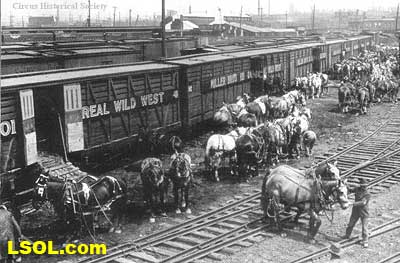
Flatcars were usually custom built. They were first made of wood, but after about 1911, the circuses began to order steel cars as the car lengths extended to 70 feet. Two car-building companies built almost all of the circus flats. They were the Warren Tank Car Company of Warren, Pennsylvania and the Mt. Vernon Car Manufacturing Company of Mr. Vernon, Illinois. The flats carried the circus wagons, tractors and trucks of the circus. They were designed to allow these vehicles to roll from one flat to the next to the end of the flats for unloading. The flat cars were lettered with the name of the circus along the side of the car.
The animal cars or stock cars were used to transport the show and work animals on the train. These cars were seventy to seventy-two feet long. Before tractors and trucks replaced work animals, these cars could account for about one quarter of the circus train. Because animals were carried in these cars, the railroad transporting the circus train had to allow for frequent stops to water the animals in route. These cars usually were lettered with the circus name along the top of the car. The coaches or passenger cars provided sleeping spaces for the all of the circus people from the lowly laborer to the ringmaster or star of the show. Usually these were cars retired from regular railroads and modified to carry more sleeping spaces and painted in the bright circus colors. Some cars became social gathering places for the circus personnel while they were on the road. The circuses call these cars ďpie carsĒ but they were not used to feed the personnel on the road. Eating was usually done in a large tent that was used with a cookhouse after the circus set up for the performance.
In Large Scale, ARISTOCRAFT and Bachmann have offered circus trains. ARISTOCRAFT has offered coaches, stockcars, boxcars, flatcars, piggyback flatcars and cabooses in circus colors. I have included a few shots of my wife, Annís set of ARISTO Circus cars. 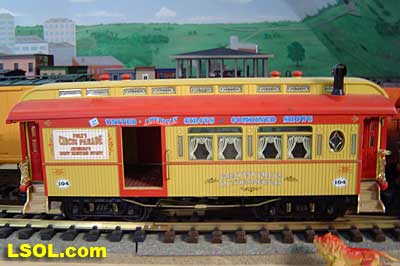
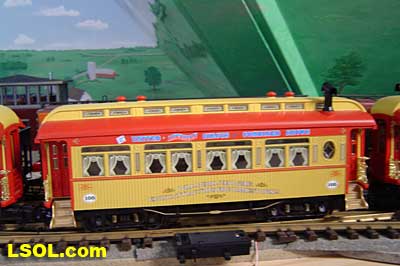
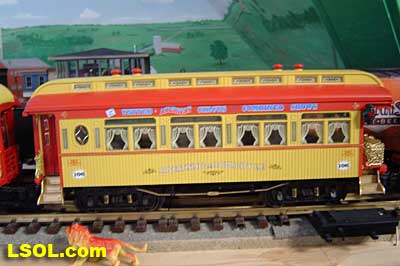
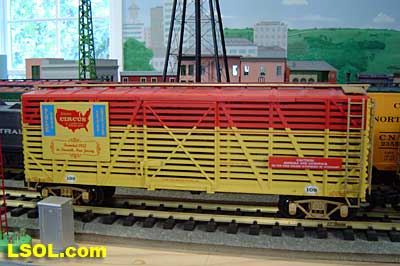 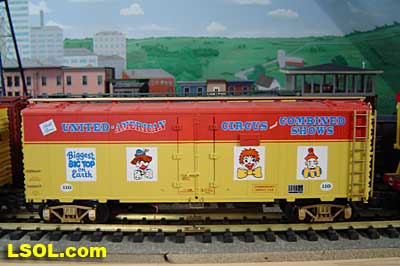
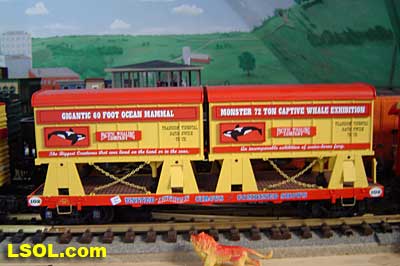
None of the ARISTOCRAFT circus cars is listed in their 2005 catalog, although their website lists some of the older cars as available. 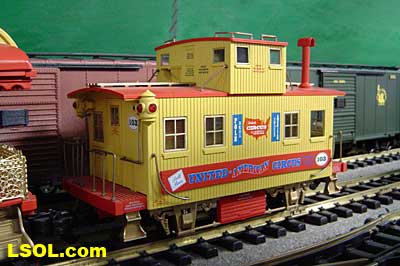
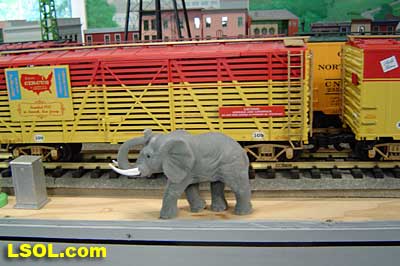
Bachmann offers Ten-Wheeler engines, stockcars, passenger cars, flatcars with several circus wagonloads, cabooses and a new water tank car, pole car and tent car. 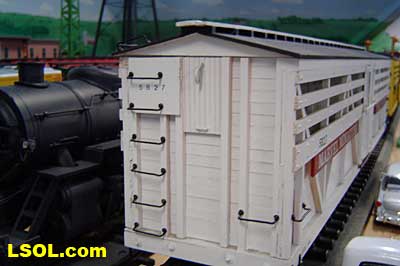
Bachmann lists all of their circus cars in their 2005 catalog. LGB has made several circus cars in the past, but the only ones currently available are a circus 4-wheel passenger car, circus cabooses, a circus car with a cage and a circus sound boxcar. 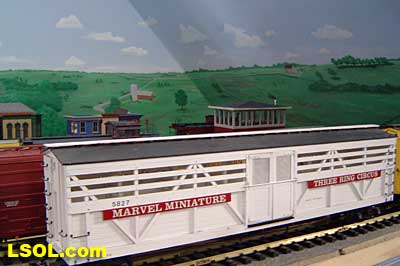
I could only find these from a discount mail-order company. Because I was putting together a circus train for Ann, I was always looking for circus equipment at the train shows I attend. 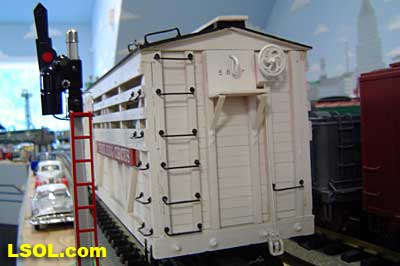
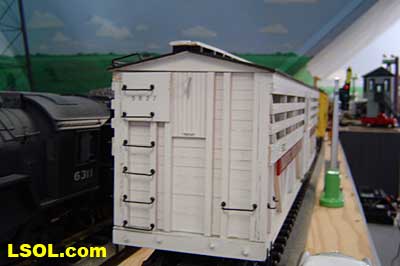
At one Train Collectorís of America (TCA) York meet, I found a couple of wooden cars and one circus wagon. The detail on these is good. I have no idea who originally built them, as the dealer who sold them to me didnít know.
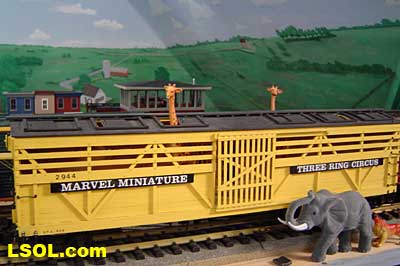
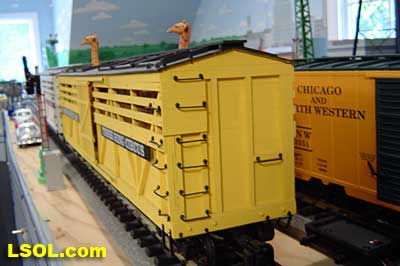
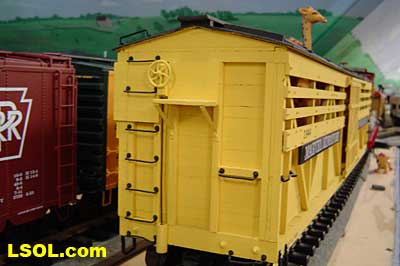
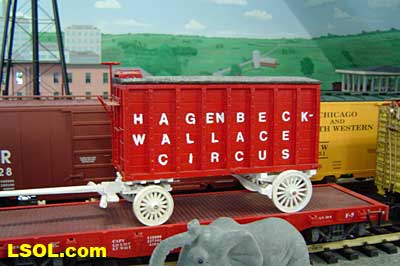
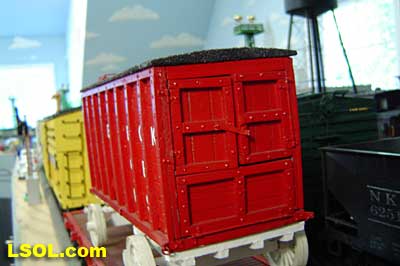
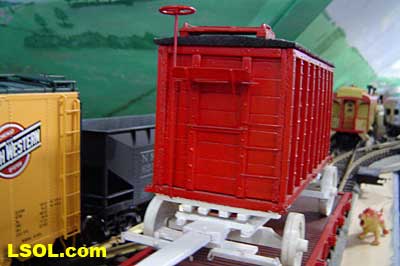
| Circus |
| Noel, Just got around to reading the circus story. It brought back a lot of memories. I lived 4 blocks from the field where the circus set up. They always had a small job for kids and would give passes to the show for work done. I played hookey from school to go help. When I came home I was ask where my report card was,as they had passed them out that day to my siblings......My dad and brother went to the circus on my tickets, as I was grounded. Lesson Learned! Larry |
| Larry Bangle - 07/16/2011 - 14:36 |
| Circus |
| Larry, Glad you enjoyed the article. I had forgotten all about it. I wrote it a long time ago. Your circus story was fun to hear. We all learned important lessons as kids. I sure loved the circus. Thanks, Noel |
| Noel Widdifield - 07/16/2011 - 15:32 |
| Ah, yes. The elephants |
| Like Larry, not all my memories of the circus are positive. I think I was four the year the circus train stopped in the little Central of Georgia rail yard and they set up the big tent in an open field adjacent to the track. Before the show opened, the site was open for us to walk through and see the animals, including the elephants. My dad had gotten us each a bag of peanuts, and I was carrying mine with the top open. One of the elephants reached out with its trunk to take my peanuts, but as the tip of its trunk got to the bag, it relieved itself of nasal congestion, right into the bag and on me. If youíve ever wondered what comes out when an elephant blows its nose, itís a lot. |
| Bill Ness - 07/27/2011 - 14:56 |
Top of Page
|



